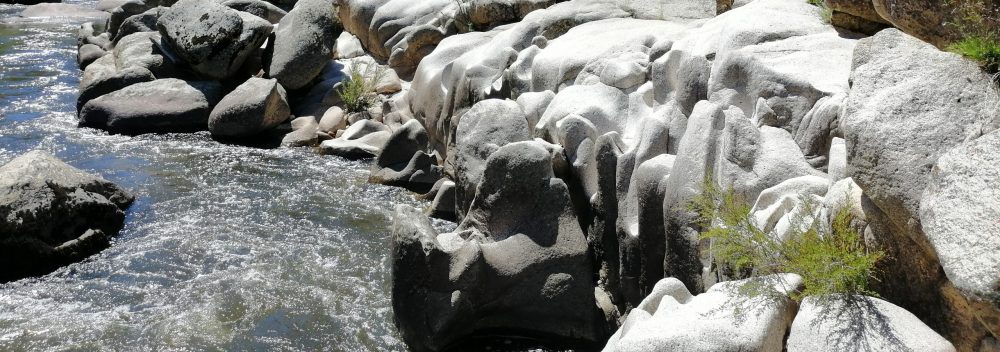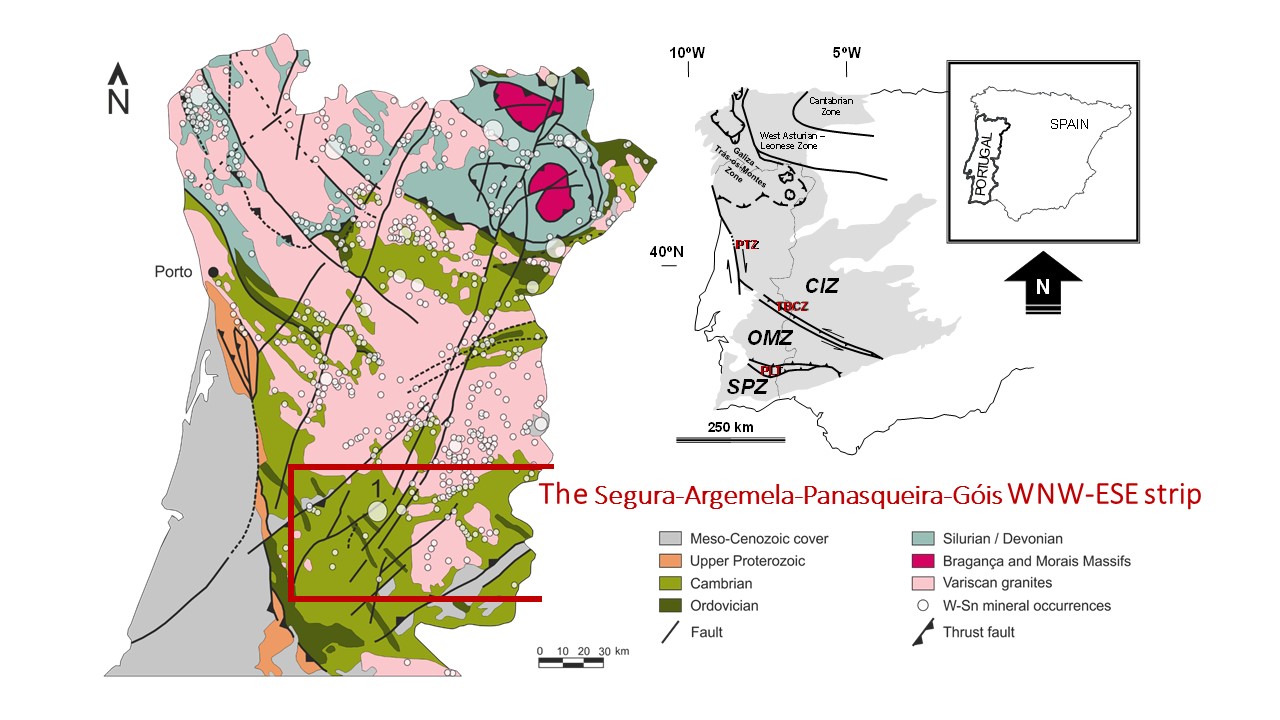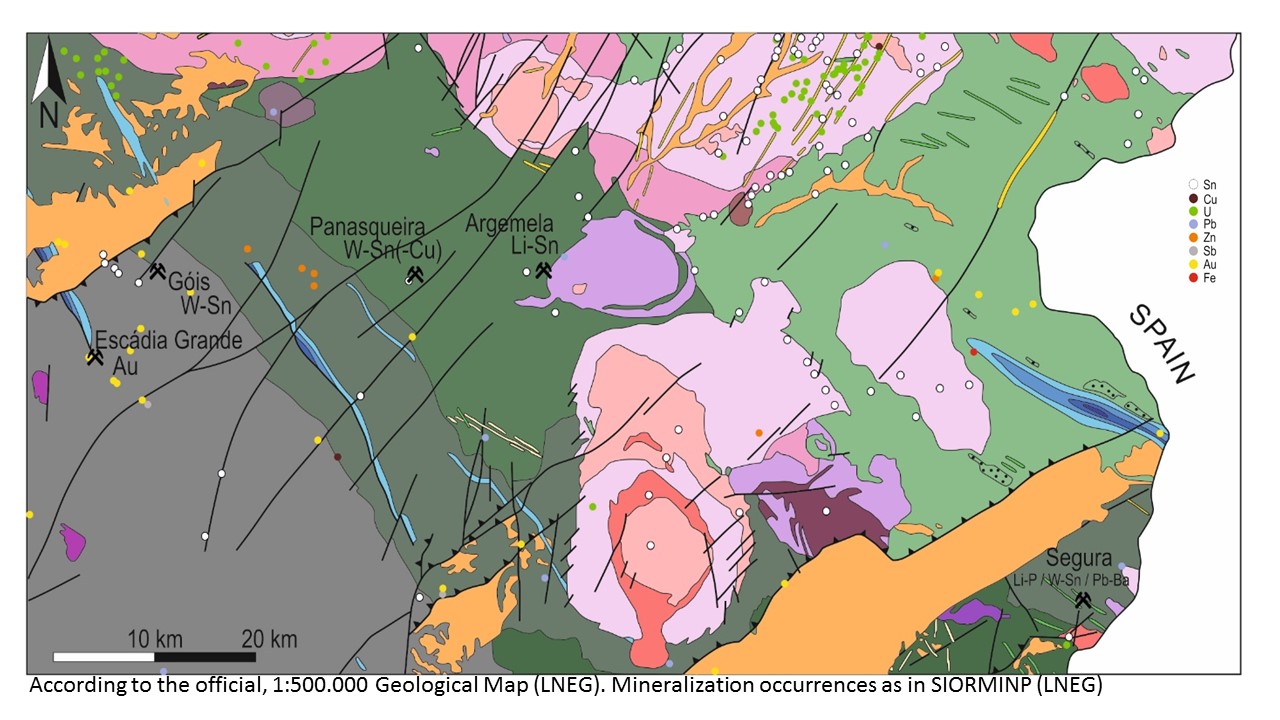Several case studies will serve as reference for the planned studies in MOSTMEG, typifying brownfields of different types of granite-related ore systems and promising greenfields for their occurrence. These case studies illustrate common scenarios in the Iberian Variscides, as typified by the Segura-Argemela–Panasqueira-Góis strip.
For all the case studies, the methodological approach will be the same, as follows:
- Detailed re-assessment of the available data, aiming their harmonization and identification of gaps to overcame in the course of the project. Structural features potentially controlling the vertical and lateral extensions of the ore system, as well as late hydrothermal overprints, will be carefully surveyed.
- Sampling of key exposures and, whenever possible, of critical drillings and/or mining underground works. Alluvial sediment samples will be re-examined when available and if justifiable.
- Multi-element whole-rock geochemistry and multi-system isotopic fingerprinting techniques to characterize granites and country metasediments, pursuing the most favourable crustal protoliths for “productive/fertile” granite melts or the most promising granite/metasedimentary suites to support distinct mineralization types/styles.
- High-resolution geochronological methods, dating the emplacement/cooling path of granite suites, as well as the main stages of prevalent mineralization types, seeking for specific time-windows during which the metallogenic processes took place. The resulting thermochronological constraints will also provide important insights on the influence of possible late hydrothermal reworking (often triggered by strike-slip fault zones criss-crossing the mineralized structures) and of subsequent exhumation.
- Methodical mineral chemistry studies, probing phases potentially valuable as fingerprints or footprints to different mineralization types and/or styles (such as those belonging to Ti-oxide, tourmaline, mica and phosphate groups). Systematic characterization of mineral assemblages forming different mineralization types/styles will also offer the means to investigate the main carriers of significant by-products (composition, relative abundance and occurrence mode) and to scan the prevalent thermochemical and thermobarometric evolving paths.
- Identification and characterization of fluids, and the track of pathfinders in fluid inclusions chemistry, determining the composition of mineralizing fluids and checking their presence in the surrounding rocks at various scales. Joint interpretation of these results and mineral chemistry will help the recognition of determinant factors for metal concentration/deposition at the ore system scale. Further integration of multi-system isotopic fingerprinting data will expectably support future criteria useful to separate similar mineralizing systems with distinct ore grades.
- Design of robust models on the development of granite-related ore systems able to guide modern exploration surveys.


